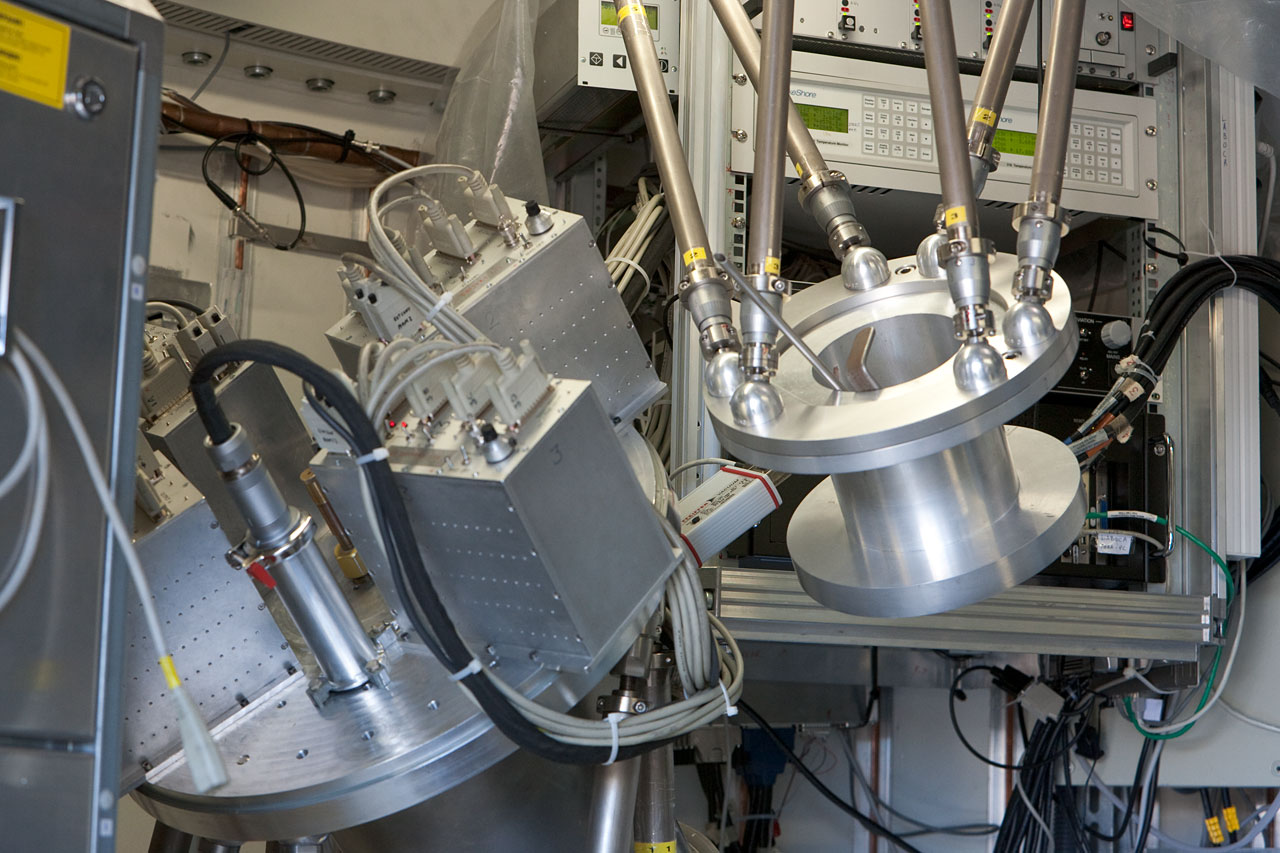LABOCA (original) (raw)
LArge APEX BOlometer CAmera
_ _Located at 5100 metres altitude, high on the Chajnantor Plateau in Chile’s Atacama region is the Atacama Pathfinder Experiment Telescope or APEX. This pioneering 12-metre telescope, operating at millimetre and submillimetre wavelengths, allows astronomers to study the cold Universe: gas, dust and celestial objects that are only a few degrees above absolute zero (-273.15° C).
_Located at 5100 metres altitude, high on the Chajnantor Plateau in Chile’s Atacama region is the Atacama Pathfinder Experiment Telescope or APEX. This pioneering 12-metre telescope, operating at millimetre and submillimetre wavelengths, allows astronomers to study the cold Universe: gas, dust and celestial objects that are only a few degrees above absolute zero (-273.15° C).
At the heart of APEX is LABOCA, or the Large APEX BOlometer CAmera, composed of 295 bolometers, making it one of the largest bolometer cameras in the world. Bolometers are highly sensitive instruments able to measure even that very small amount of energy received from cold astronomical sources in the sky. This sensitivity allows the instrument to measure the very low energy emissions of the cold Universe.
To register these tiny temperature fluctuations, the bolometers must be cooled to less than 0.3 degrees above absolute zero, and so the LABOCA detector is kept in a high-vacuum cryostat system that uses liquid nitrogen and liquid helium to cool it down to an operational temperature of just above absolute zero.
Closer to home, LABOCA is studying Kuiper Belt Objects in the Solar System, looking for clues to as to how our own planetary system, and planets in general, formed. It is also particularly useful in the study of star formation in the Milky Way (eso1431). LABOCA’s ability to map large areas of sky with high sensitivity is exploited by surveys of the distribution of the cold dust in our galaxy (eso0903). Through subsequent analysis of the gas properties of a large number of clouds and clusters it is possible to work out where new stars are being born in the Milky Way and develop a detailed understanding of their evolution.
All these characteristics have made LABOCA and APEX the perfect partners to work side by side (also literally) with ALMA to explore the cold Universe.
Science Highlights
- ALMA and APEX discover massive conglomerations of forming galaxies in early Universe (eso1812)
- APEX reveals hidden star formation in protocluster (eso1431)
- APEX finds strongest link so far between the most powerful bursts of star formation in the early Universe and the most massive galaxies found today (eso1206)
- Astronomers obtain first image of a dusty disc closely encircling a massive baby star (eso1029)
- APEX snaps first close-up of star factories in distant Universe (eso1012)
- VLT and APEX team up to study flares from the black hole at the Milky Way's core (eso0841)
LABOCA
The authoritative technical specifications as offered for astronomical observations are available from the Science Operation page.
| Telescope: | APEX (now decommissioned) |
|---|---|
| Focus: | Cassegrain |
| Type: | Submillimetre |
| Wavelength coverage: | 870 μm |
| Angular resolution: | 18.6 arcseconds |
| Spectral resolution: | |
| First light date: | August 2007 (eso0735) |
| Science goal: | Star formation Molecular clouds Distant Universe |
| Images taken with the instrument: | Link |
| Images of the instrument: | Link |
| Videos of the instrument: | Link |
| Press Releases with the instrument: | Link |
| Data papers: | (Includes ESO and non-ESO papers)Link ESO data citation policy |
| Consortium: | Max Planck Institute for Radioastronomy (MPIfR) in Bonn, Germany ESO |
